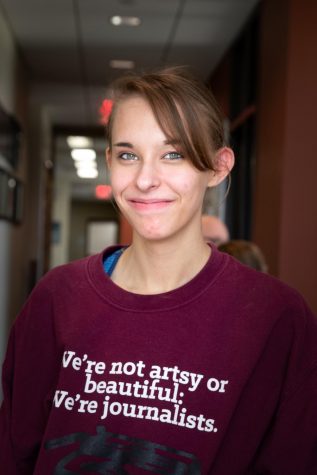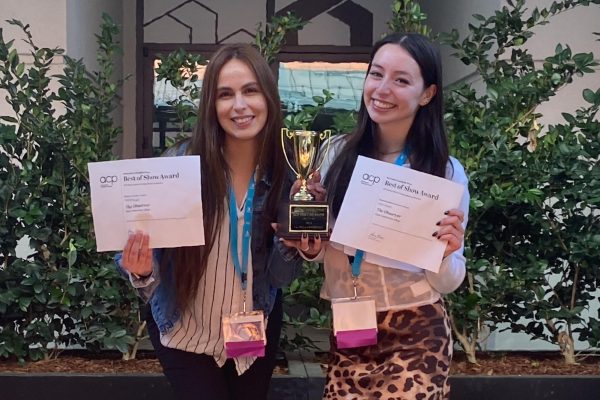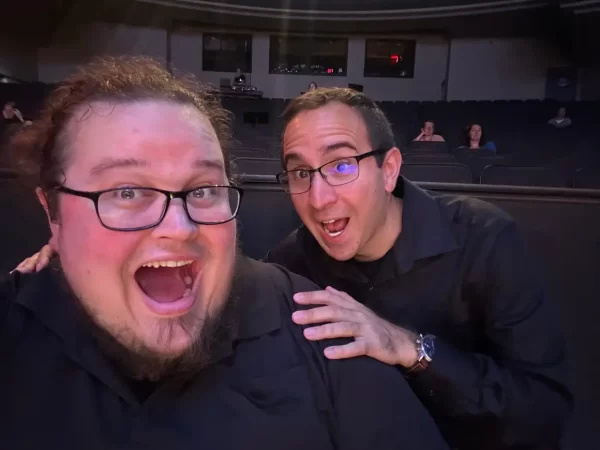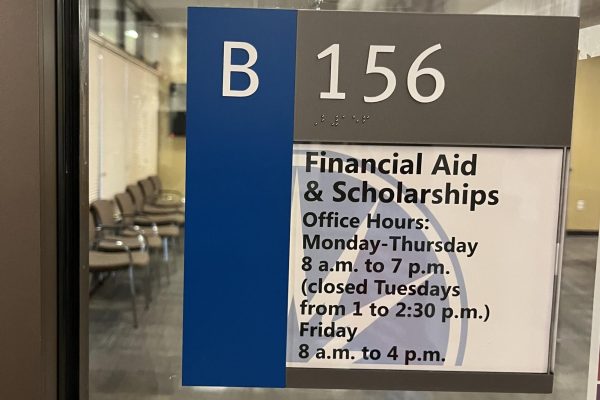Holocaust Survivor: A Jehovah’s Witness Tale
November 18, 2019
The Holocaust, also known as the Shoah, was the genocide of European Jewish people by the Nazi Party between 1941 and 1945. Nazi Germany systematically murdered six million Jewish people throughout German-occupied Europe. Around two-thirds of Europe’s Jewish population.
Ginger Alms, an Elgin Community College English professor, presented her research about the persecution of Jehovah’s Witnesses during the Nazi regime. While the 1,900 Witnesses executed were far smaller than the number of deceased Jews, the impact on their population of 35 thousand Witnesses in Europe was dramatic. Thousands more were held in camps and prisons. 500 children of Witnesses were removed and subjected to Nazi indoctrination.
One of the children was Simone Arnold Liebster. Attendees at the ECC event enjoyed a live Skype call with this 89-year-old survivor. Liebster emphasized that the Holocaust is a touchy subject for many adult survivors. While the public is interested in the tragic story, survivors have horrible memories etched in their minds of what they and their families endured.
She spoke in an engaging way, almost captivating the audience. Liebster and her family were Jehovah’s Witnesses, she explained Nazi discrimination against groups other than just the Jewish people. She was 12 when she began her two-year confinement in a Nazi penitentiary.
“Reading the book Facing the Lion: Memoirs of a Young Girl in Nazi Europe. I was impressed by people of such a young age standing up against a whole system,” Alms said.
Alms located the Arnold-Liebster Foundation, specializing in presenting the Jehovah’s Witnesses’ experience during Nazi occupation of Europe during the Second World War. Alms learned of their historical and educational traveling exhibit, Faith Under Fire. Alms arranged for the exhibit to come to ECC. More information about the Foundation can be found at www.alst.org.
Alms believes that the experience of the Jehovah’s Witnesses in the Holocaust generally strengthened their group.
Liebster, who experienced these atrocities, led a peaceful life since the end of World War II.
“The Jehovah’s Witnesses were very organized and the only group to have been released by proclamation,” Alms said. “However, they were persecuted for remaining steadfast in the fundamental belief of nonviolence and racial equality. If they had elected to sign a declaration of allegiance to Hitler, while recanting their faith, they could have avoided the Nazi terrors. Ultimately, their courage and strength of faith showed that their very small, minority population was able to stand against Nazi treatment.”
Greg Milakovich is a representative for the Arnold-Liebster Foundation, founded by Holocaust-era survivors who sponsor the traveling exhibit. He designed the exhibition Jehovah’s Witnesses: Faith Under Fire, currently at ECC.
“Witnesses are inspired by their history during World War II,” Milakovich said. “In the Witness community, the history of what the Witnesses experienced during the Nazi era is often discussed as a model of how far Christians would go to obey God and their conscience. Witnesses worldwide follow the same doctrine of nonviolence.”
“Those Jehovah’s Witnesses who survived the camps did so dedicated to ‘continued living their lives in peace and love’ as they had done toward all prisoners in the concentration camps,” Milakovich said.
Overall, the horrific experience of the Jehovah’s Witnesses has strengthened its organization. Witnesses today understand the victims died with a clean conscience due to their refusal to kill others or betray their religion.
“That courage has influenced many young Jehovah’s Witnesses to ‘face up to peer pressure and bullying, feeling proud to stand up for what they believe is right,” Milakovich said. “Current strength is gained from prior tragedies.”
Until November 27th, there is an exhibit on display in Hallway B, near The Hub Student Lounge to supplement the information in this article. The exhibit shows a summary of Liebster’s life and how she overcame the life-changing effects of the Holocaust.









Gerhard Gollub • Nov 22, 2019 at 8:37 am
Vielen Dank Mackenzie. Ich finde es sehr mutig und großartig wie sie sich als junger Mensch mit diesem nicht einfachen Thema auseinandersetzen. Alles Gute ihnen für die Zukunft die Zukunft.
Jacqueline • Nov 21, 2019 at 8:54 am
I was a Jehovah witness for 63 years and their training does help you to endure unspeakable persecution.
I was persecuted by family and the witness community for simply walking away to find ones that worshiped Jesus.
Do this knife cuts bother ways when the persecuted become the persecutors.
I am so glad she made it out and I pray for Israel also.
Jw Tsana • Nov 20, 2019 at 9:42 pm
Grazie. Per non dimenticare.
Michael • Nov 20, 2019 at 11:00 am
Thank you for such a well written article, brought a tear to my eye.
LARRY WILSON • Nov 19, 2019 at 4:35 am
I am a student of history and especially the persecution of Jehovah’s Witnesses before and during WWII. I highly recommend the book Facing The Lion and the book, “Crucible of Terror by her husband Max Liebster. Book books build faith and courage, especially for minorities.
One of my favorite quotes from the book is on Page 333. “May 1945 Walking silently side by side amidst blossoming meadows and trees reminded Mum and me of the wonderful comforting song we shared together at Meersburg. The same words had comforted me when Marcel Sutter died, (See his last note of Page 407), They were in my heart when I had believed Mum had died, and when I saw Johannes Hus’ memorial stone, “‘Will we meet again after the tomb?”‘ The answer was certainly… How appropriate were Mum’s words, “We know that God cannot lie; he is a living God. If death would keep mankind perpetually in its bonds, it would be stronger that God, wouldn’t it? This thought builds my personal faith that we can face anything that comes our way. Jesus Christ is recorded as saying, “If they persecuted me they will persecute you.”
Thank you for taking such a personal interest in a sad and happy time in history.
Larry Wilson
Virginia